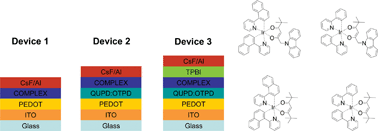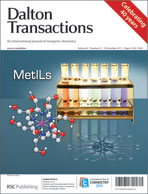Screening structure–property correlations and device performance of Ir(iii) complexes in multi-layer PhOLEDs†
Abstract
The structure–property correlations of a set of heteroleptic red- and green-emitting Ir(III) complexes with different temperature sensitivities and charge trapping capabilities are described, revealing superb performance in multi-layer phosphorescent organic light-emitting diodes (PhOLEDs) expressed by very high maximum luminous efficiencies up to 36.8 cd A−1. Using


 Please wait while we load your content...
Please wait while we load your content...